
Aerial photograph of Jamestown Island showing seventeenth-century triangular fort and brick church tower at center right. (Courtesy, Jamestown Rediscovery Foundation.)
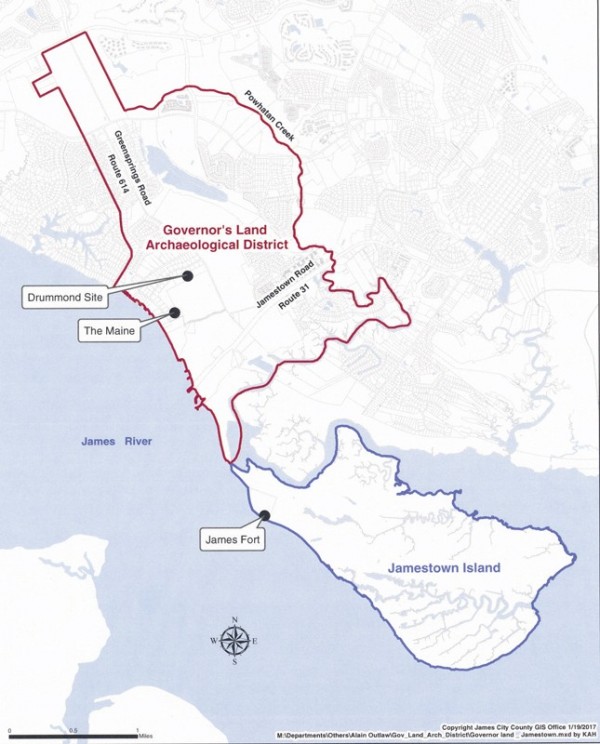
Map of the Governor’s Land Archaeological District and Jamestown Island, James City County, Virginia, 2017. (Courtesy, James City County GIS; mapping, Kim Hazelwood.)
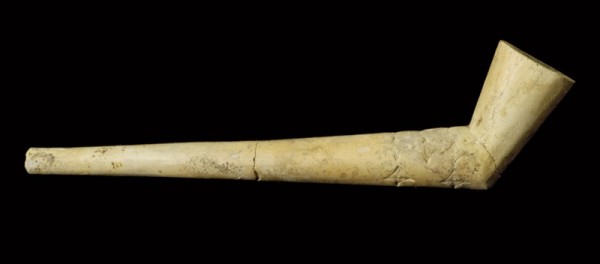
Tobacco pipe, Robert Cotton, Jamestown, Virginia, 1608. Terracotta. L. 4 1/2". (Courtesy, Jamestown Rediscovery Foundation; photo, Michael Lavin.)

Three-bowl tobacco pipe, Dutch, 1618–1625. White ball clay. L. 6 5/8". (Courtesy, Virginia Department of Historic Resources; photo, Robert Hunter.)
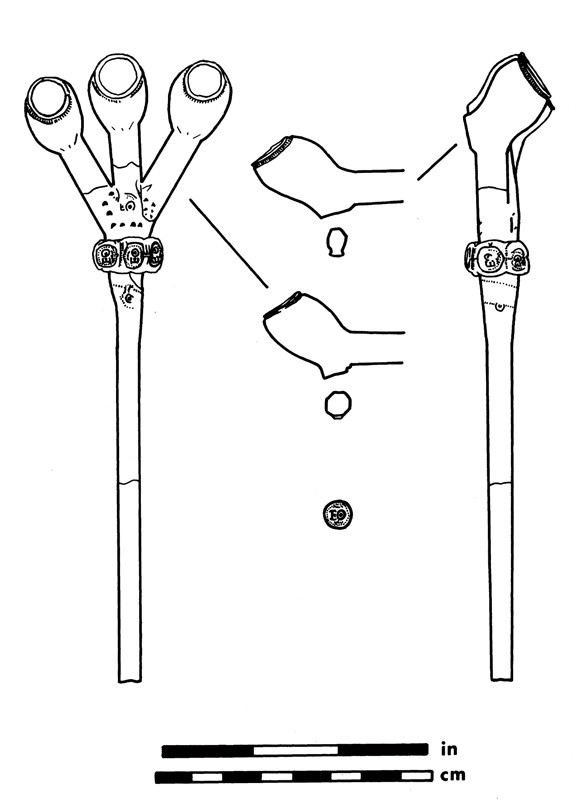
Drawing of the three-bowl tobacco pipe illustrated in fig. 4 depicting the multiple “EO” stamps of the maker. (Drawing, Alain C. Outlaw.)
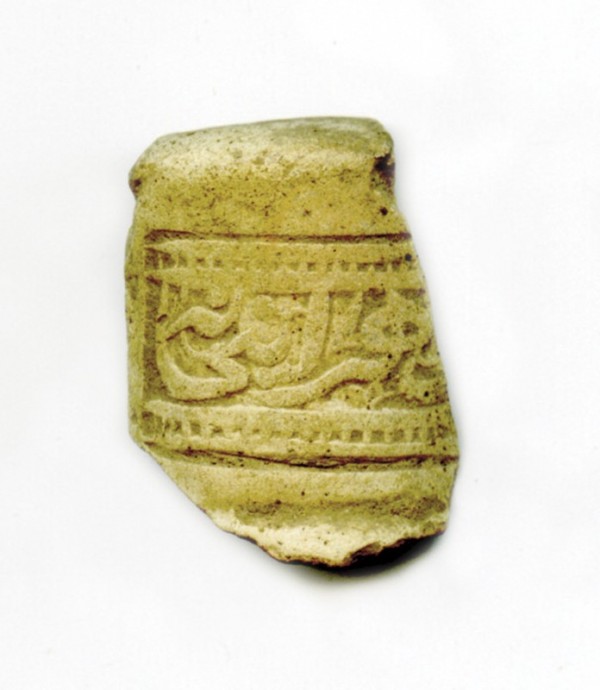
Pipe fragment, Chibouk, Turkey, early seventeenth century. Earthenware. H. 3/4". (Courtesy, Jamestown Rediscovery Foundation and Colonial National Historical Park; photo, Hayden Bassett.) George Sandys traveled to Turkey in 1610 and was the first Englishman to describe the Turkish tobacco pipe, or chibouk.
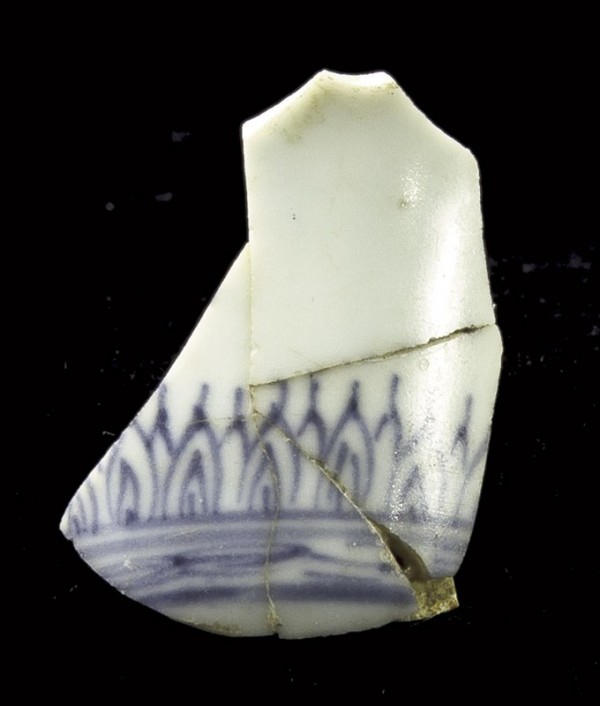
Wine cup sherd, Jingdezhen, China, 1618–1625. Hard-paste porcelain. H. 1 1/4". (Courtesy, Virginia Department of Historic Resources; photo, Robert Hunter.)
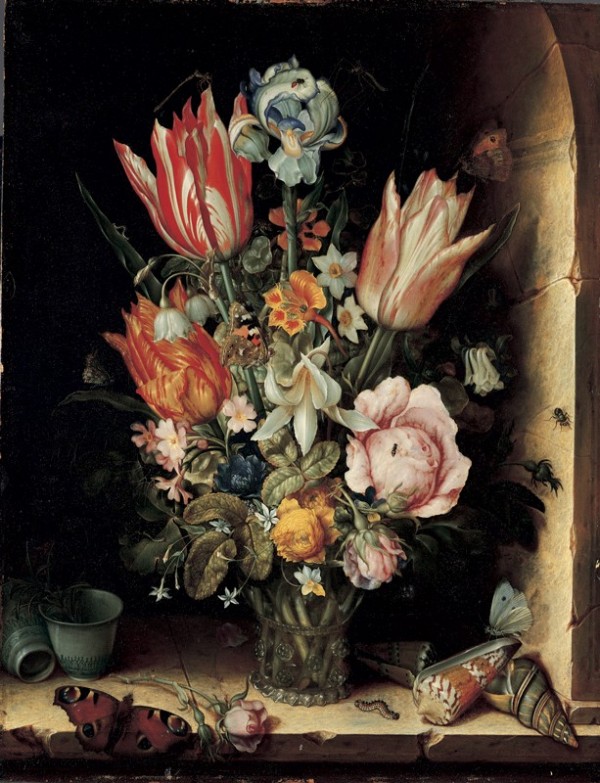
Christoffel van den Berghe (active Middelburg, Netherlands, ca. 1617–after 1628), Still Life with Flowers in a Vase, 1617. Oil on copper. 14 13/16 x 11 5/8". (Courtesy, Philadelphia Museum of Art, John G. Johnson Collection.)
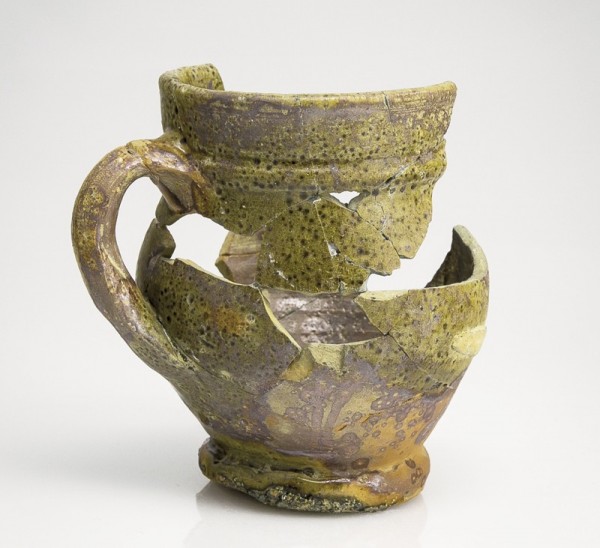
Mug, Thomas Ward, Jamestown, Virginia, 1620–1635. Lead-glazed earthenware. H. 4 1/2". (Courtesy, Jamestown Rediscovery; photo, Robert Hunter.)
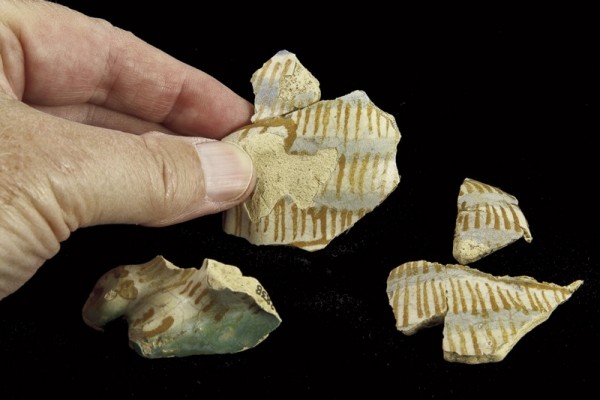
Cat jug fragments, London, England, 3rd quarter of seventeenth century. Tin-glazed earthenware. (Courtesy, Virginia Department of Historic Resources; photo, Robert Hunter.) Recovered in the 1970s during archaeological excavations of the William Drummond site.

Cat jug, London, England, third quarter of seventeenth century. Tin-glazed earthenware H. 6 3/8". (Courtesy, Colonial Williamsburg Foundation.)
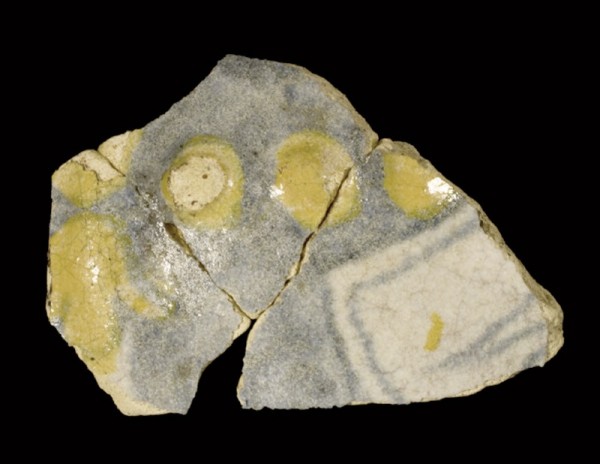
Cat jug fragment, England, mid-seventeenth century. Tin-glazed earthenware. H. 7/8" (Courtesy, York County Historical Museum; photo, Michael Lavin.) Only the lower left corner of the panel was found. It may have surrounded initials and a date.
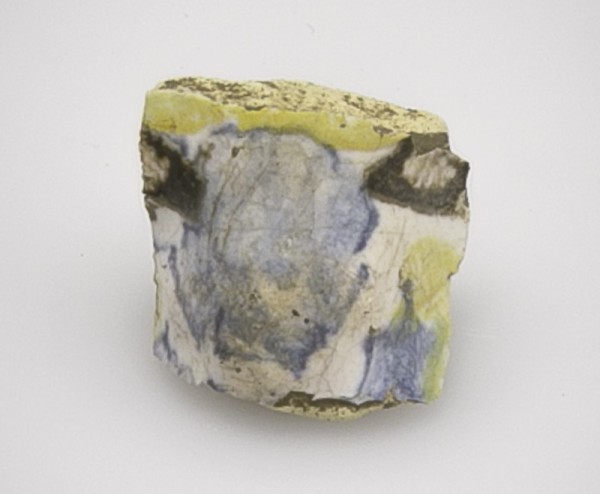
Cat jug fragment, England, third quarter of seventeenth century. Tin-glazed earthenware. H. 3/4". (Courtesy, Jamestown Rediscovery Foundation; photo, Robert Hunter.) The eyes and nose of the cat are depicted on this small press-molded and polychrome decorated sherd.
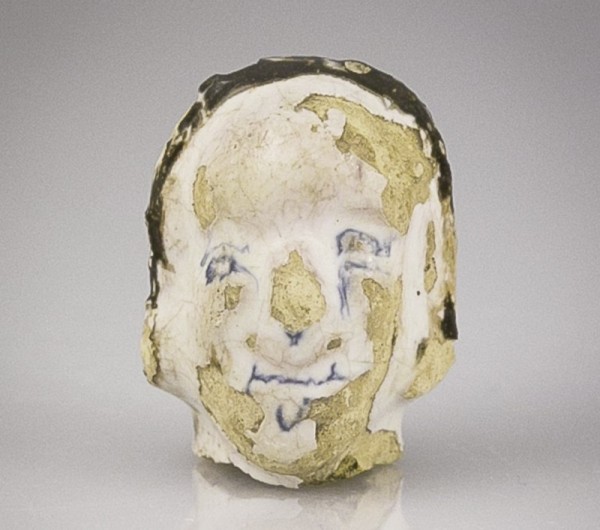
Figural salt fragment, London, England, third quarter of seventeenth century. Tin-glazed earthenware. H. 1 1/2". (Courtesy, Jamestown Rediscovery Foundation; photo, Robert Hunter.)
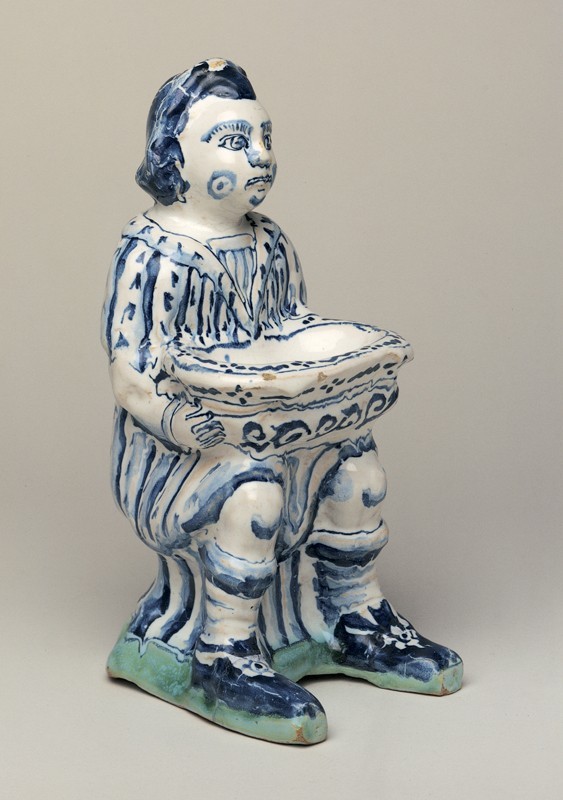
Figural salt, London, England, dated 1673. Tin-glazed earthenware with polychrome decoration. H. 7 3/4". (Courtesy, New-York Historical Society.)

Dish, Portugal, fourth quarter of the seventeenth century. Tin-glazed earthenware. D. 14". (Courtesy, Virginia Department of Historic Resources; photo, Robert Hunter.) This deep dish with lace motif was found on the Governor’s Land, and is similar to one from New Town excavations by the National Park Service on Jamestown Island.
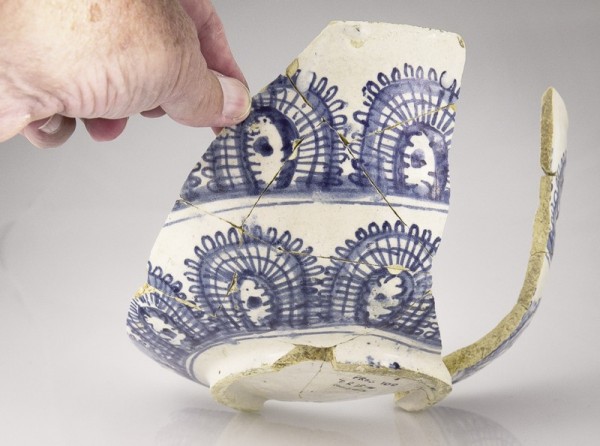
Punch bowl, Portugal, third quarter of seventeenth century. Tin-glazed earthenware. H. 4 3/4". (Courtesy, Jamestown Rediscovery Foundation; photo, Robert Hunter.)
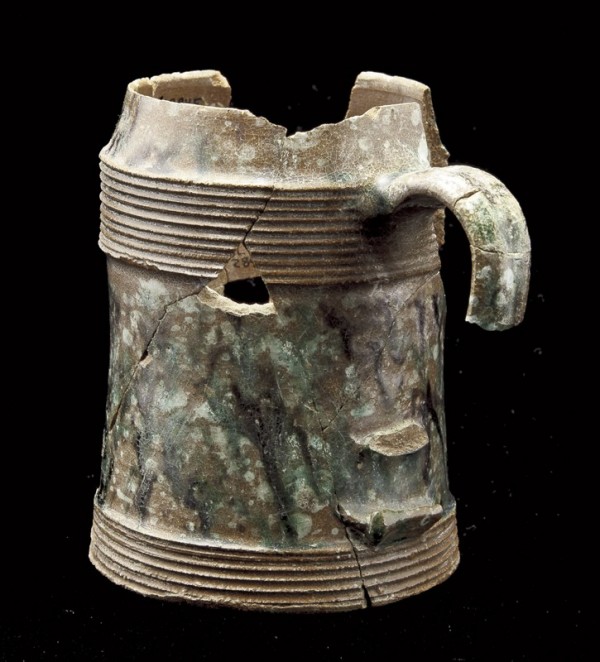
Can, possibly Fulham, England, 1685–1695. Lead-glazed earthenware. H. 4". (Courtesy, Jamestown-Yorktown Foundation and Jamestown Settlement; photo, Robert Hunter.)
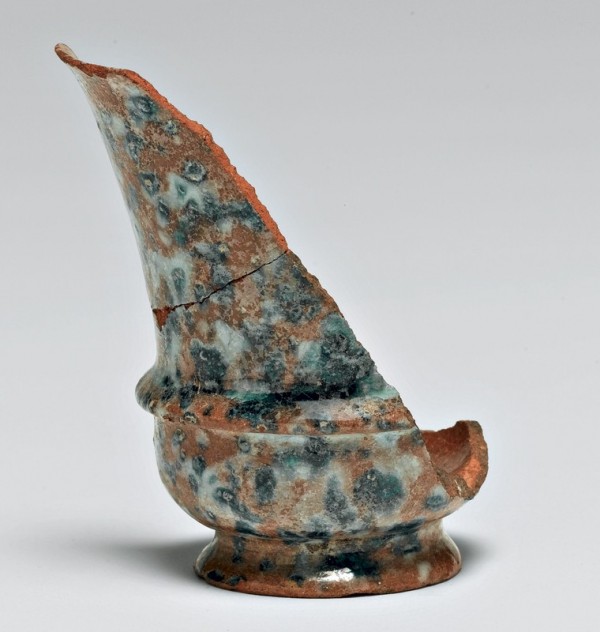
Capuchine, possibly Fulham, England, ca. 1685–1720. Lead-glazed earthenware. H. 3". (Courtesy Museum of London Archaeology Service; photo, Andy Chopping.) Found in Bishopsgate just outside of London, this small handled cup is similar in form to salt-glazed stoneware examples made in John Dwight’s Fulham factory in the last decade of the seventeenth century.

Gorge, John Dwight, Fulham, England, ca. 1685–1695. Brown salt-glazed stoneware. H. 4". (Courtesy, Jamestown-Yorktown Foundation and Jamestown Settlement; photo, Robert Hunter.)
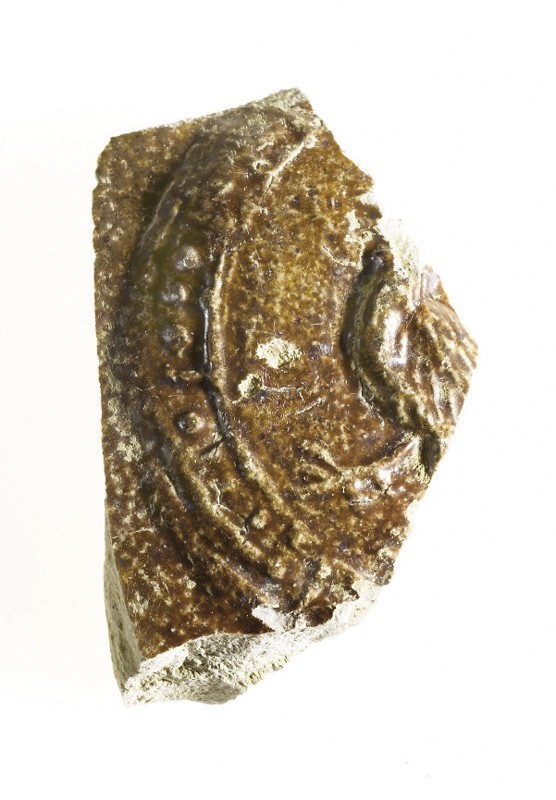
Jug fragment, John Dwight, Fulham, England, ca. 1675–1676. Brown salt-glazed stoneware. H. 2". (Courtesy, Virginia Department of Historic Resources; photo, Robert Hunter.)
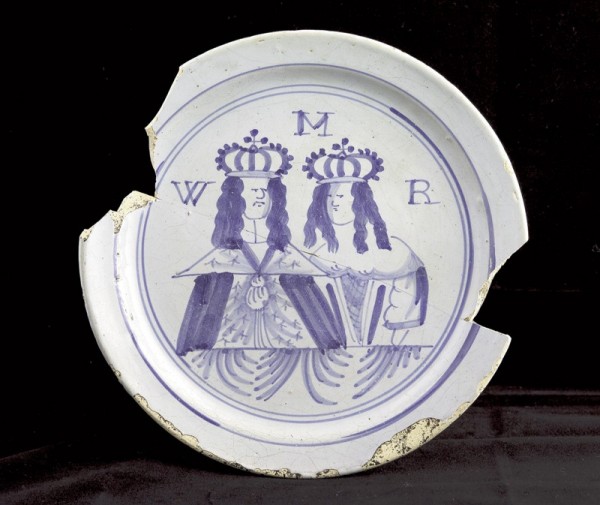
Plate, London, England, 1689–1693. Tin-glazed earthenware. D. 8 1/2". (Courtesy, Virginia Department of Historic Resources; photo Robert Hunter.) After the Revolutionary War, Governor’s Land became the property of The College of William and Mary
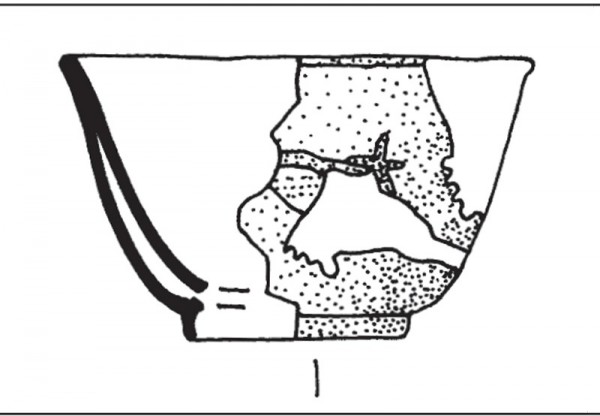
Illustration showing a carved teabowl. Nottingham, England, ca. 1700. Salt-glazed stoneware. The fragments represent the only known Nottingham brown salt-glazed stoneware carved teabowl. (Drawing, Patty Munford.)

Gorge, Nottingham, England, ca. 1700. Salt-glazed stoneware H. 3 15/16". (Colonial Williamsburg Foundation.) The ca. 1700 trade card of John Morley of Nottingham depicts a jug similar in form to this gorge, which is in the collections of the Colonial Williamsburg Foundation.
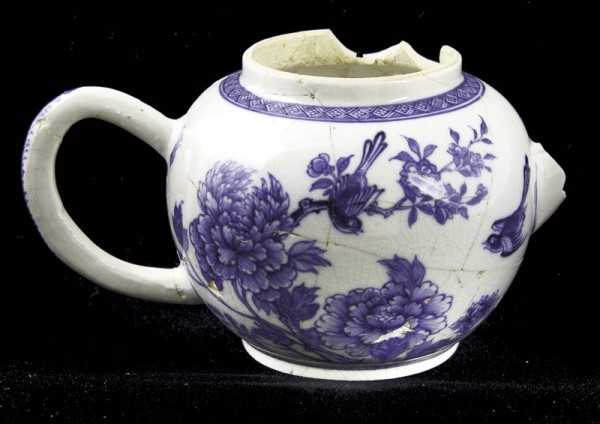
Teapot, China, 1745–1750. Slip-glazed porcelain. H. 3 1/2". (Jamestown-Yorktown Foundation and Jamestown Settlement; photo, Robert Hunter.)
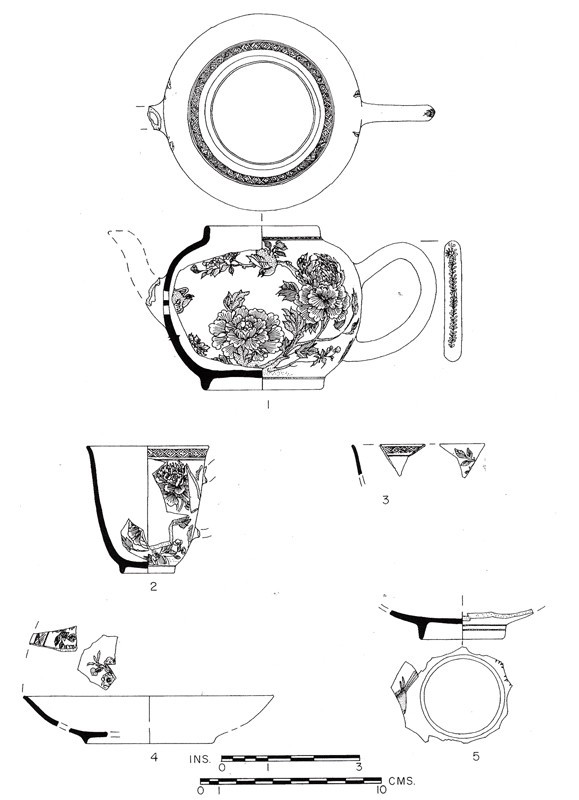
Illustration of vessels from a soft paste Chinese porcelain tea set found on the Drummond site. (Drawing, Patty Munford.) Note that the finely painted bird and peony motif appears on both sides of the teapot.
